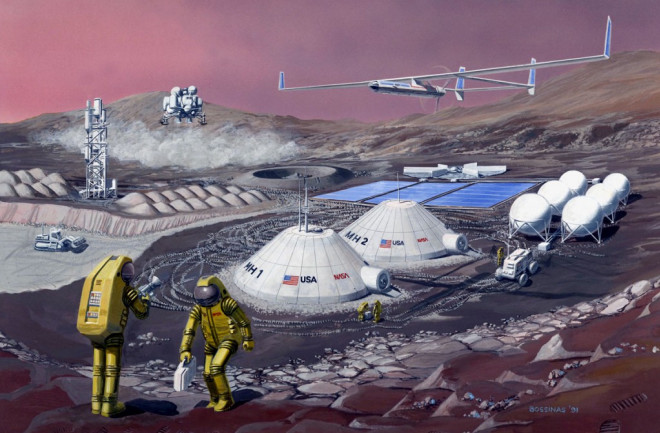Space exploration has come a long way since the first human landed on the moon. The advancements in technology and science have enabled us to explore beyond our solar system and discover new worlds. As we continue to venture further into space, the future of space exploration looks promising. In this article, we’ll take a closer look at what’s in store for space exploration in the coming years.
Table of Contents
- Introduction
- Advancements in Technology and Science
- The Role of Private Companies
- The Rise of Artificial Intelligence
- The Potential of Space Tourism
- Discovering New Worlds
- Exploring Mars
- Searching for Extraterrestrial Life
- Interstellar Travel
- The Challenges of Space Exploration
- Space Debris and Pollution
- Radiation Exposure
- Mental Health Issues
- Conclusion
- FAQs
Advancements in Technology and Science
The Role of Private Companies
The role of private companies in space exploration has been growing rapidly in recent years. Companies like SpaceX, Blue Origin, and Virgin Galactic have been working on developing reusable rockets, which could significantly reduce the cost of space travel. SpaceX has also been successful in launching commercial satellites into orbit and resupplying the International Space Station. In the coming years, private companies are expected to play an even more significant role in space exploration.
The Rise of Artificial Intelligence
Artificial Intelligence (AI) is becoming increasingly important in space exploration. NASA has been using AI to improve its space exploration capabilities, from autonomous navigation to data analysis. AI can help reduce the time it takes to analyze data and make decisions, which is crucial for space exploration missions. With further advancements in AI, we could see robots and drones exploring other planets and moons in the near future.
The Potential of Space Tourism
Space tourism is becoming a reality. Private companies like Virgin Galactic and Blue Origin have already started taking reservations for suborbital spaceflights. In the future, we could see space hotels, lunar tourism, and even trips to Mars become a reality. However, the cost of space tourism is still prohibitive for most people, and safety concerns remain a significant challenge.
Discovering New Worlds
Exploring Mars
Mars has been a popular target for space exploration for decades. Several missions have already been sent to Mars, including NASA’s Mars rover missions, which have provided valuable information about the planet’s geology and potential habitability. In the coming years, several more missions are planned, including the Mars Sample Return mission, which aims to bring back samples from Mars to Earth for analysis.
Searching for Extraterrestrial Life
The search for extraterrestrial life is one of the most exciting areas of space exploration. NASA’s Kepler mission has discovered thousands of exoplanets, many of which are in the habitable zone of their star. The James Webb Space Telescope, set to launch in 2021, will be able to detect the chemical composition of exoplanet atmospheres and search for signs of life. With further advancements in technology, we could soon discover life beyond Earth.
Interstellar Travel
Interstellar travel, the ability to travel between stars, is still a long way off. However, scientists are working on developing new propulsion systems that could make interstellar travel a reality. One such system is the Breakthrough Starshot, which aims to send a fleet of tiny spacecraft to Alpha Centauri, the nearest star system to our own.
The Challenges of Space Exploration
Space Debris and Pollution
Space debris and pollution are becoming a significant challenge for space exploration. The debris from previous missions, along with the thousands of satellites in orbit, pose a risk to current and future missions. To combat this, there have been calls for stricter regulations on the number of satellites in orbit and for companies to develop technologies to remove space debris.
Radiation Exposure
Radiation exposure is a major challenge for astronauts traveling in space. The radiation in space can cause long-term health effects, such as an increased risk of cancer. To mitigate this risk, scientists are developing new shielding technologies and medical treatments to protect astronauts during long-term space missions.
Mental Health Issues
The isolation and confinement of space travel can have a significant impact on astronauts’ mental health. NASA and other space agencies are working on developing programs to help astronauts cope with the mental stresses of space travel, including virtual reality therapy and other psychological support systems.
Conclusion
The future of space exploration looks bright, with advancements in technology and science paving the way for new discoveries and opportunities. Private companies are expected to play an increasingly important role in space exploration, and we could soon see the rise of space tourism and even interstellar travel become a reality. However, there are also significant challenges to overcome, including space debris, radiation exposure, and mental health issues. As we continue to explore the cosmos, we must also work to ensure that space exploration is done in a responsible and sustainable manner.
FAQs
- What is the most significant challenge facing space exploration?
The most significant challenge facing space exploration is the issue of space debris and pollution, which poses a risk to current and future missions.
- How are private companies contributing to space exploration?
Private companies are contributing to space exploration by developing new technologies and spacecraft, and by providing launch services for both government and commercial missions.
- Will we ever discover extraterrestrial life?
With further advancements in technology and continued exploration of exoplanets, it’s possible that we could discover extraterrestrial life in the future.
- What is the Breakthrough Starshot project?
The Breakthrough Starshot project is a proposed system for interstellar travel, which aims to send a fleet of tiny spacecraft to Alpha Centauri, the nearest star system to our own.
- What is the future of space tourism?
The future of space tourism looks promising, with private companies like Virgin Galactic and Blue Origin already offering suborbital spaceflights. However, the cost of space tourism remains prohibitive for most people, and safety concerns remain a significant challenge.
